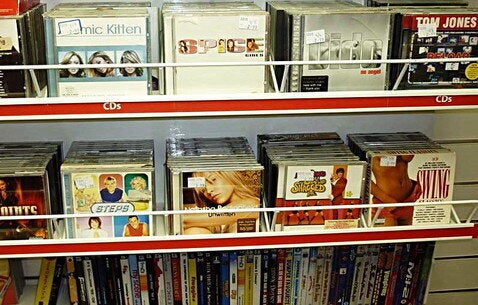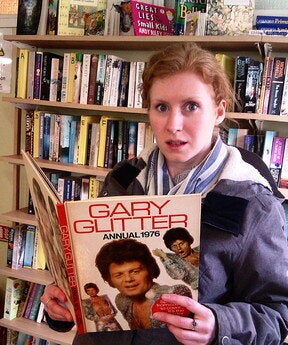
Charity shops have been good to me over the years. At least half of my book and record collection, and a quarter of my wardrobe, can trace their lineage to Oxfams and Sue Ryders across the land.
They've proliferated more than ever in this post-recession retail landscape, often occupying empty high street stores no sooner have they been vacated, attracted as always by heavily discounted business rates.
Whenever I'm on assignment or a weekend away in another part of the country I'll usually duck into one if there's time to kill, chasing another random find, be it some vintage flares or an old Beano annual.

Only a charity shop can induce that Proustian high of another nostalgic find or a rare record that's slipped through the pre-filtration process, followed by the often protracted volunteer till experience. I managed to progress to first-name terms at one hometown shop, which sometimes let me into their stockroom when it was overflowing, and I returned the favour with occasional volunteer shifts.
Those glory days, however, become more distant as time passes because over the last ten years or so there's been a noticeable decline in the charity shop experience. (And it's nothing to do with Mary Portas' attempts to whip them into shape a few years back.)

What's become apparent is that since the rise of eBay more people have opted to flog their cast-offs online, and the best of what is donated to charity is routinely creamed off by shops' sorters before making it onto the shelves. Indeed many charities today run their own eBay stores for more profitable items.
Then you have the lesser-spotted charity shop dwellers stalking the aisles with their smartphones, eBay-searching anything with a potential profit beyond the seller fees levied by the auction site and PayPal.
For the more casual customer, the cumulative consequence has been ever decreasing returns. All that remains is the customary 'tat' - low-end filler from naff bric-a-brac to shelffuls of Fifty Shades of Grey novels (some stores actually no longer accept the books as no one buys them any more).

This all leads to the final insidious phenomenon: the exorbitant mark-ups placed on junk, epitomised by the opening photo at the top of the article I took recently at a British Heart Foundation in Suffolk. That's £6.99 and £7.99 being charged for fusty old Harry Secombe and Doris Day LPs, items with so little cultural capital that you wouldn't be able to give them away.
One shop local to me once left boxes of old albums outside and exhorted passers-by to take them for free, but hardly anyone took up the offer, likewise with VHS cassettes, which are still priced by some outlets at as much as £2 a tape.
Other examples include used DVDs for more than their RRP online brand new; budget book series like Penguin Popular Classics whose original price often doubles upon hitting the shelves; and some antique collectables priced way beyond what they'd fetch at a specialist.

Or £225 for a pair of shoes
A common retort to all this is "charities need to maximise their profits"; "it's all for a good cause"; "some larger charities like Oxfam have sales targets", which might explain their shops being dearer than more laissez-faire independent ones.
Don't get me wrong, I completely agree with their ultimate goal being to extract as much profit as possible from truckloads of donations, but surely that end would be better achieved by attracting more customers with realistic, reasonable prices instead of repelling them with senseless ones? If a butcher or shoe shop suddenly jacked up all its prices it would very quickly go out of business.
And from a donator's POV, what's the point in bequeathing your boxfuls of CDs/DVDs, as I do each time I move house, if they're just going to stagnate on a shelf after being illogically overpriced? I once returned a month later to a shop I'd donated to, to find many of the CDs - old magazine cover compilations - randomly priced at £3 and £4 with no consideration or comprehension that they won't sell for that.

When stockrooms are stuffed from floor to ceiling all these shops need are people who understand these basic market forces. Pile it high, sell it cheap, keep that stock moving, like an unending task on The Apprentice. That's what will entice customers back and get the tills ringing again.
For me, my charity shop days are drawing to a close either way. The ratio of time spent searching versus finding anything of value has dwindled too much. But for those less better off who rely on charity shops for clothes or baby toys more out of necessity, it's for them that stores should discontinue their lingering mistakes, with the charities themselves the ultimate beneficiaries.
I'm just thankful I was on the scene before eBay got its mitts on everything - what's left behind ain't pretty.
